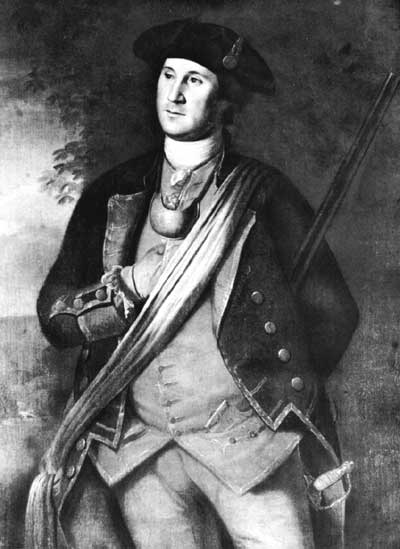|
FORT NECESSITY National Battlefield |
 |

Lt. Col. George Washington. From the painting by Charles
Willson Peale. The original is owned by Washington and Lee University
and hangs in Lee Chapel, Lexington, Va.
"A volley fired by a young Virginian in the backwoods of America set the world on fire."

SO HORACE WALPOLE a contemporary British statesman, described George Washington's attack on the French at Jumonville Glen and the resulting action at Fort Necessity. With these two events occurring on May 28 and July 3, 1754, a war began that was soon to engulf Great Britain and France on the continent of Europe and throughout their colonies and was to change radically the balance of power in America. Here, too, Washington, a lieutenant colonel of Virginia militia at the age of 22, first commanded troops in action.
Known in America as the French and Indian War and in Europe as the Seven Years' War, the conflict was destined to establish a new world order. When formal peace was again restored in 1763, all of Canada and the whole area east of the Mississippi River, except New Orleans, became part of the British American domain. "The British victory," said the historian Francis Parkman, "crippled the commerce of her rivals, ruined France in two continents, and blighted her as a colonial power. It gave England control of the seas . . . made her the first of commercial nations, and prepared that vast colonial system that has planted new Englands in every quarter of the globe. And . . . it supplied to the United States the indispensable condition of their greatness, if not of their national existence."
The clash of imperial colonial policy which brought on the engagement at Fort Necessity produced at the same time one of the first instances of cooperation among the British colonies in America. Primarily concerned heretofore with their separate interests, colonial governors and assemblies were now awakening to the need of working together for their common interests and for concerted action against their common enemies.

|
|
Last Modified: Mon, Dec 2 2002 10:00:00 am PDT |


